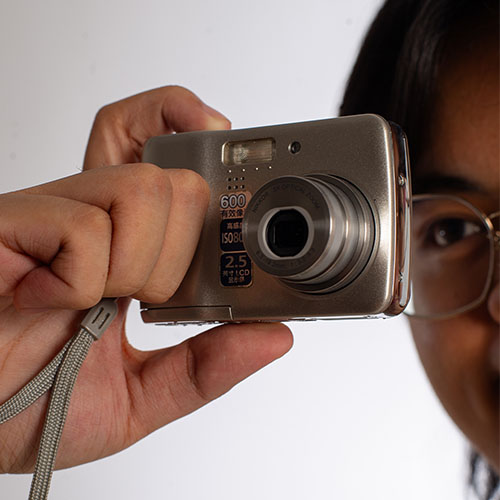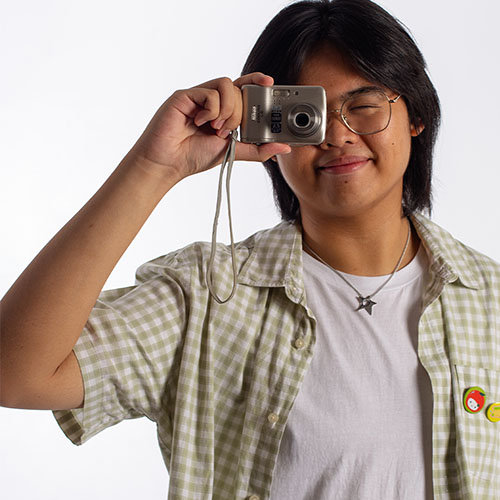Recommend ko 'yan!
Digicam
Digital cameras, affectionately known as “digicams,” have experienced a remarkable resurgence in recent years, particularly among younger generations. In 1975, Steven Sasson, an engineer at Kodak, developed the first digital camera prototype. It was a bulky device that captured black-and-white images at a resolution of 0.01 megapixels and stored them on cassette tapes. As the 90s and 00s rolled around, digital cameras became mainstream, with brands like Canon, Nikon, and Sony releasing compact models that offered convenience and improved image quality. However, in the 2010s, The rise of smartphones with high-quality cameras led to a decline in digital camera sales, as consumers favored the convenience of having a camera integrated into their phones.
In the early 2020s, digital cameras from the late ’90s and early 2000s began to regain popularity, especially among Gen Z. Several factors contribute to this trend. The unique look of photos taken with older digital cameras—characterized by their grainy texture and distinct color profiles—offers a nostalgic feel that contrasts with the polished images produced by modern smartphones. Using a dedicated camera encourages intentional photography, as opposed to the instant and often superficial nature of smartphone snapshots.


Digicam
Digital cameras, affectionately known as “digicams,” have experienced a remarkable resurgence in recent years, particularly among younger generations. In 1975, Steven Sasson, an engineer at Kodak, developed the first digital camera prototype. It was a bulky device that captured black-and-white images at a resolution of 0.01 megapixels and stored them on cassette tapes. As the 90s and 00s rolled around, digital cameras became mainstream, with brands like Canon, Nikon, and Sony releasing compact models that offered convenience and improved image quality. However, in the 2010s, The rise of smartphones with high-quality cameras led to a decline in digital camera sales, as consumers favored the convenience of having a camera integrated into their phones.
In the early 2020s, digital cameras from the late ’90s and early 2000s began to regain popularity, especially among Gen Z. Several factors contribute to this trend. The unique look of photos taken with older digital cameras—characterized by their grainy texture and distinct color profiles—offers a nostalgic feel that contrasts with the polished images produced by modern smartphones. Using a dedicated camera encourages intentional photography, as opposed to the instant and often superficial nature of smartphone snapshots.


Recommend ko 'yan!
Digicam
Digital cameras, affectionately known as “digicams,” have experienced a remarkable resurgence in recent years, particularly among younger generations. In 1975, Steven Sasson, an engineer at Kodak, developed the first digital camera prototype. It was a bulky device that captured black-and-white images at a resolution of 0.01 megapixels and stored them on cassette tapes. As the 90s and 00s rolled around, digital cameras became mainstream, with brands like Canon, Nikon, and Sony releasing compact models that offered convenience and improved image quality. However, in the 2010s, The rise of smartphones with high-quality cameras led to a decline in digital camera sales, as consumers favored the convenience of having a camera integrated into their phones.
In the early 2020s, digital cameras from the late ’90s and early 2000s began to regain popularity, especially among Gen Z. Several factors contribute to this trend. The unique look of photos taken with older digital cameras—characterized by their grainy texture and distinct color profiles—offers a nostalgic feel that contrasts with the polished images produced by modern smartphones. Using a dedicated camera encourages intentional photography, as opposed to the instant and often superficial nature of smartphone snapshots.

